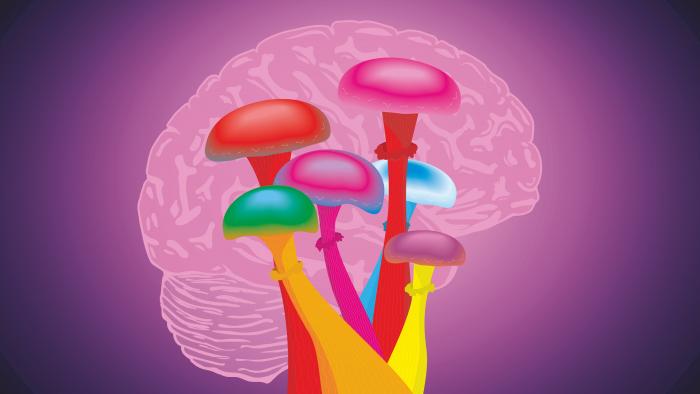A ‘Magic’ New Treatment for Depression? PSYC Alum Investigates
Adam Brockett set out to understand how the brain is impacted by a psychedelic drug being studied to potentially treat depression
The psychedelic component of hallucinogenic “magic mushrooms” may one day serve a clinical purpose: Treating individuals with depression and other mental health and substance use disorders.
Interest in the therapeutic use of the compound has steadily gained traction as researchers have spent the last two decades assessing how psilocybin might help individuals struggling with addiction, anxiety, and depression with some early success. One recent study, for example, found that after just two doses of psilocybin, participants reported a decrease in depressive symptoms that lasted three, six, nine, and even 12 months after the fact—a significant finding considering that most antidepressants must be taken daily.
Now, Adam Brockett, PSYC ’11 is adding to that growing body of psilocybin research, having recently completed a study at the University of Maryland on what effect psilocybin may have on the brain.
Through a $50,000 award provided by the UMD Grand Challenges Grant Program while he was an assistant research professor in the Department of Psychology, Brockett examined the behavior and auditory cortex of live mice before and after a dose of psilocybin.
“We had the mice’s brains scanned while they listened to just tones, and that gave us our baseline of how much the auditory cortex pays attention to this,” Brockett explained. “Then we gave them some psilocybin and had them listen to the same tones again, and what we found was that in the first ten minutes or so that they were intoxicated, the mice’s neurons were very active to these tones, almost more so than they were at baseline. But after about ten minutes, these neurons became very quiet; they didn't seem to care at all about the external cues that they were hearing.”

The study, published in the Journal of Neurophysiology, notes that during those initial 10 minutes, the mice also appeared to be more interested in exploring the cage, and showing physical signs of “tripping” by shaking their head like a wet dog would.
In addition, the functional connectivity between the mice’s brain regions—how the parts of the brain interact with each other—increased thirty minutes after the dose of psilocybin even though the mice’s neurons quieted in the auditory cortex.
“It seems from our research that what might be happening when psilocybin is taken is subjects become less aware of what's around them, and more focused on some sort of internal change or sensation that they might be experiencing,” Brockett said.
None of the mice dosed with psilocybin had adverse effects. Still, psilocybin remains a schedule one drug, meaning that for humans, it is a drug “with no currently accepted medical use and a high potential for abuse,” according to the United States Drug Enforcement Administration.
“We know these drugs profoundly alter the senses and our sense of perception, but we don't really know how or why,” Brockett said. “Now, this gives us a baseline understanding of what these drugs are actually doing to our senses. I think this helps us kind of map that space, or at least acts as a first step towards mapping that space. And I think the more that we have this mapped out, the more likely that it becomes a tenable option for people.”
Looking to the future, Brockett plans to study how psilocybin can play a part in promoting brain plasticity and cognitive flexibility; that is, psilocybin’s role in helping the brain change over time. He will pursue this research at the University of New Hampshire as an assistant professor of neurobiology.
Read “Psilocybin decreases neural responsiveness and increases functional connectivity while preserving pure-tone frequency selectivity in mouse auditory cortex”
This article was written by Sofia Appolonio, JOUR '26 and Rachael Grahame. The image is by iStock.
Published on Wed, Aug 7, 2024 - 12:59PM




